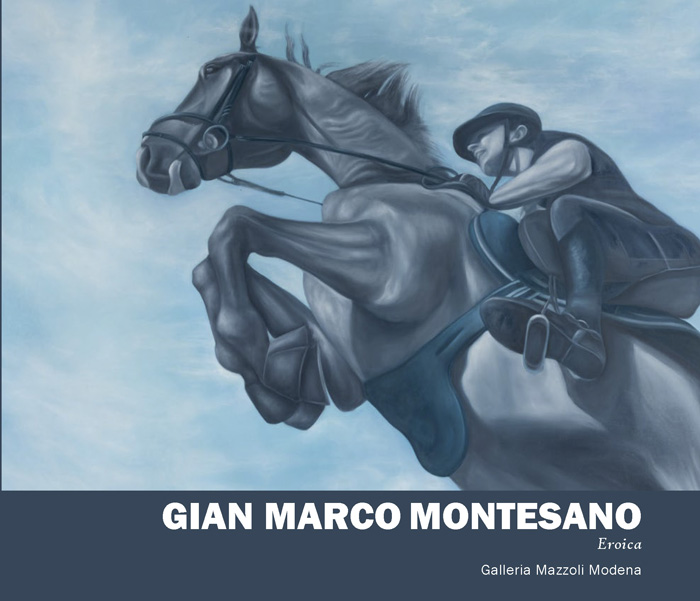8 February - April 2020
Eroica | Gian Marco Montesano
Galleria Mazzoli / Via Nazario sauro n.62, Modena
Gian Marco Montesano is an artist, a writer and a theater director.
In the 1960s he moved to Bologna, and painted the images with which he grew up, those of religious art, conveyed by prayer cards for the popular worship of saints,
but shifted from their traditional context to take on new meanings, in an approach it would be simplistic to define as “post-modern.”
Later he went to live Paris, where he was involved in the lively scene of the time, forming intense friendships with the philosophers Gilles Deleuze and Jean Baudrillard.
From the end of the 1980s throughout the 1990s, Montesano was credited as a sort of founder of so-called Medialismo, a term he took with many reservations, and even rejected,
because his attitude is not simply metalinguistic, by aims at the recreation of a “realism” that is utterly mental, that reflects on the enigmatic meanings of History, almost always by painting in black and white.
The (necessarily photographic) repertoire of historical memory utilized by Montesano is our collective imaginary, dating back most of all to the dramatic and crucial years of the
formation of Europe over the course of the 20th century, until the moment of its crisis. In this panorama of being we find all the heterogeneous personalities coming to grips with
the unfolding of time: children and women, soldiers and battle scenes, romantic landscapes, celebrities and urban views with a cinematic, post-realist quality.
Besides painting, Montesano has a career in theater, as a director and founder of a company known for its experimental and innovative approach. He was invited to
take part in the Venice Biennale in 1993 and 2009. In 2003 and 2005 his works were shown in the Prague Biennial. Montesano has had solo exhibitions in important
public and private spaces, in Italy and abroad. Many critics and philosophers have written about his work, including Gilles Deleuze, Philippe Sollers, Jean Baudrillard, Toni Negri, Achille Bonito Oliva.
He lives and works in Paris and Bologna.
PRESS RELEASE
After the exhibitions Se da lontano in 1994, Mostra Occidentale in 2001 and Fratelli, di quale reggimento siete? in 2006, the gallery hosts a fourth solo show by the Turin-based artist. The works have subjects drawn from his vast imaginary, ranging from historical figures and episodes to sports legends, romantic landscapes to dance and theater, workers to movie stars, all the way to soldier-musicians playing instruments amidst the ruins of war.
In the catalogue, Valerio Dehò writes, “In this exhibition Gian Marco Montesano makes a sort of voyage back in his time, in his artistic history, as well as Italian and European history, through images that by now are part of his repertoire and his diversity. No other artist has come to grips with history as he has. No one has had the courage and daring to paint personalities now relegated to books and old magazines, the Sunday supplements that set the pace of decades gone by. There is also a comparison with works from 2002 to 2010 that depict the war, Berlin, the Great Dictators […]” while “in this new series of works” reigns “a meek, gentle sentiment. Montesano’s painting has lost the hardness of the past, and a certain cruelty he inherited from his theatrical activity has been softened. The gaze is not merciless. The soldiers do not do battle, but play the violin on the ruins of the umpteenth Brandenburg Gate. The submarine does not suggest the splendors of a bygone war, but instead the atmosphere of a Sunday family stroll at the waterfront, to see the ships and the sailors. No smoke, no bayonets. The knights do not rush into oblivion, but into the void.”
Montesano’s painting remains a practice of historical investigation and recovery of memory, based on a very personal way of using black and white that links back to the early 20th century.
The exhibition is accompanied by a catalogue with an essay by Valerio Dehò.
exhibition's catalogue

Gian Marco Montesano | Eroica
Essay by Valerio Dehò
72 pages, color images
500 numbered copies
Published by Galleria Mazzoli. Modena, 2020.
